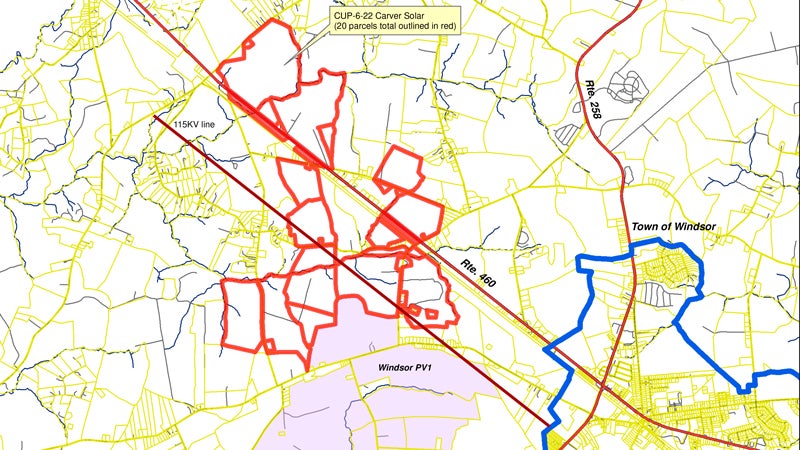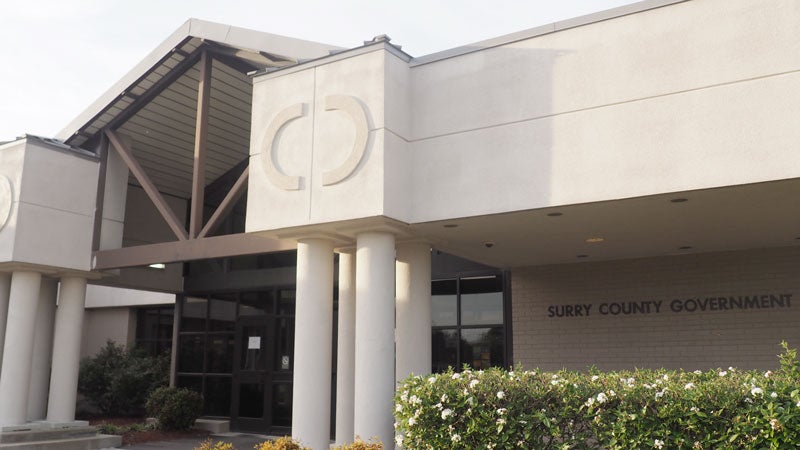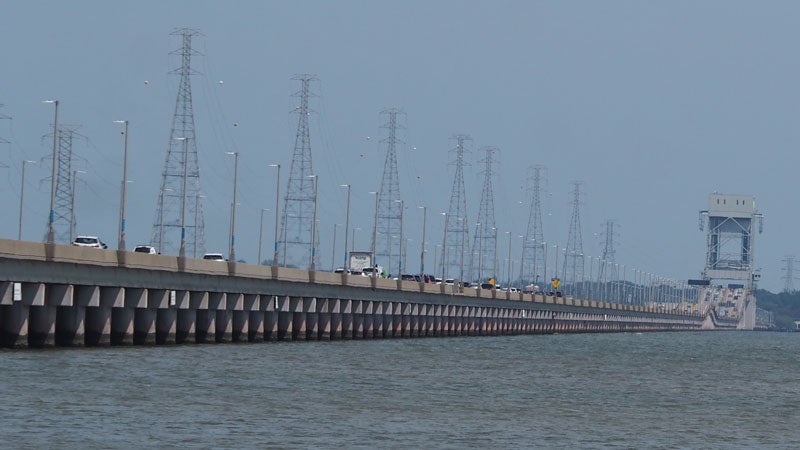IW supervisors to reconsider rejected solar farm
Published 12:43 pm Tuesday, August 8, 2023

- This map, created by Isle of Wight County, shows the location of the proposed Carver Solar facility in red in relation to the borders of the town of Windsor in blue. (Image courtesy of Isle of Wight County)
Six months after rejecting a 637-acre solar farm, Isle of Wight County supervisors will reconsider the matter on Aug. 17.
Supervisors Dick Grice and Rudolph Jefferson had each voted in February to approve the 71-megawatt Carver Solar facility, which would straddle both sides of Route 460 between Windsor and Zuni. But supervisors William McCarty, Joel Acree and Don Rosie voted against the project.
Since there was only a defeated motion to approve the Carver project, and no official vote to deny Texas-based Open Roads Renewables the requested conditional use permit, the project technically remains pending. Open Roads had asked in June that the project be placed back on the supervisors’ agenda, and had received a date in December for the reconsideration.
Grice and County Attorney Bobby Jones each noted at the supervisors’ Aug. 3 meeting that the company is under an end-of-year time constraint from Dominion Energy to finalize its interconnection agreement with PJM, a regional electric transmission organization operating across 13 states and the District of Columbia.
Grice said his negotiations with Open Roads for an earlier reconsideration date have yielded an offer from the company to increase its voluntary cash payments to the county.
A 2022 economic impact study by Magnum Economics, prepared for Open Roads, had projected the Carver solar farm would generate just over $3 million in real estate taxes over the project’s estimated 40-year lifespan. The company has further offered a $1,400 per megawatt per year payment in lieu of machinery and tools taxes, which would pay the county an additional $6.1 million over 40 years.
In addition to the cumulative $9.2 million from taxes and per-megawatt payments, Open Roads had, as of February, proposed six options for voluntary cash payments that would provide the county an additional $1 million to $2 million. According to Grice, the company has since offered a seventh that would provide the county with $2.5 million over a 20-year period.
Grice is proposing to combine the Carver project’s payments with those from the seven other solar farms Isle of Wight County has approved since 2015, and earmark the funds for debt payments associated with large, one-time expenditures such as the building of new schools and the purchase of new fire and rescue vehicles.
According to Grice, earmarking the tax money and voluntary payments from Carver and the seven other solar farms would enable the county to take on $14 million in new debt without having to raise its real estate tax rate.
The supervisors, earlier this year, voted to lower the county’s real estate tax rate from 85 cents per $100 in assessed value to 71 cents in light of its recent reassessment of property values, which saw the valuation of single-family homes rise 34% on average.
The roughly 16% lowering of the county’s real estate rate marked the first decrease the rate had seen in 16 years.
“I hate the idea of having to take that away,” Grice said.
The county will not hold a second public hearing on Carver at the Aug. 17 meeting. Twenty speakers had provided more than an hour of commentary on the project at the supervisors’ Jan. 18 hearing, mostly in opposition.
Their concerns ranged from the visual impact of solar panels on an otherwise rural area of the county to a woman who contended the electromagnetic fields produced by solar farms could potentially interfere with her medical implant. Company officials had contended following the hearing that there was “no firmly established link” between electromagnetic fields and health concerns, and had asserted EMF levels emitted by utility-scale solar inverters reduce to below background levels at a distance of 150 feet. Open Roads had committed to a 200-foot minimum setback from Route 460, Cut Thru Road and any residential parcels as of January.





